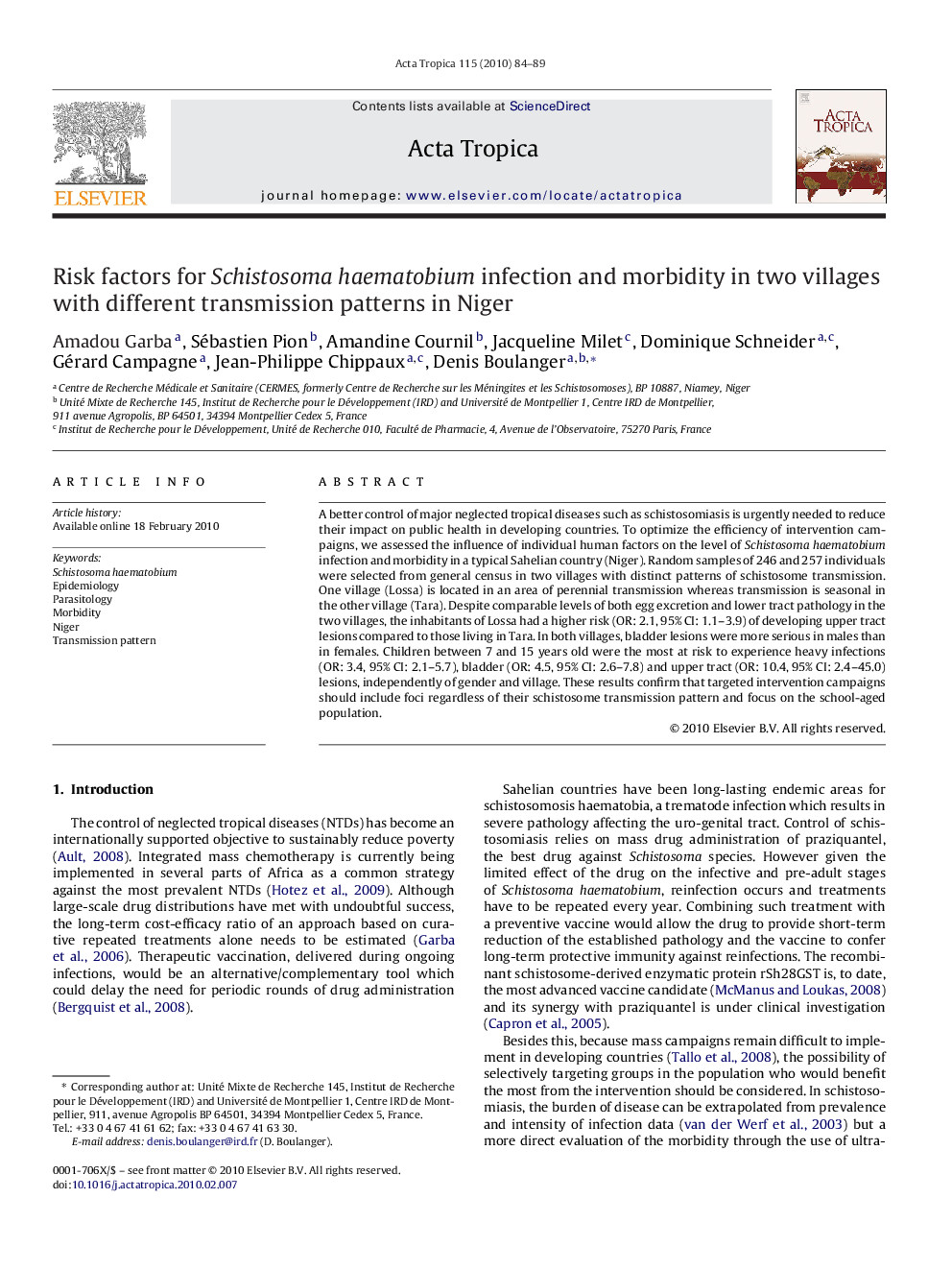| کد مقاله | کد نشریه | سال انتشار | مقاله انگلیسی | نسخه تمام متن |
|---|---|---|---|---|
| 3393971 | 1592798 | 2010 | 6 صفحه PDF | دانلود رایگان |

A better control of major neglected tropical diseases such as schistosomiasis is urgently needed to reduce their impact on public health in developing countries. To optimize the efficiency of intervention campaigns, we assessed the influence of individual human factors on the level of Schistosoma haematobium infection and morbidity in a typical Sahelian country (Niger). Random samples of 246 and 257 individuals were selected from general census in two villages with distinct patterns of schistosome transmission. One village (Lossa) is located in an area of perennial transmission whereas transmission is seasonal in the other village (Tara). Despite comparable levels of both egg excretion and lower tract pathology in the two villages, the inhabitants of Lossa had a higher risk (OR: 2.1, 95% CI: 1.1–3.9) of developing upper tract lesions compared to those living in Tara. In both villages, bladder lesions were more serious in males than in females. Children between 7 and 15 years old were the most at risk to experience heavy infections (OR: 3.4, 95% CI: 2.1–5.7), bladder (OR: 4.5, 95% CI: 2.6–7.8) and upper tract (OR: 10.4, 95% CI: 2.4–45.0) lesions, independently of gender and village. These results confirm that targeted intervention campaigns should include foci regardless of their schistosome transmission pattern and focus on the school-aged population.
Journal: Acta Tropica - Volume 115, Issues 1–2, July–August 2010, Pages 84–89